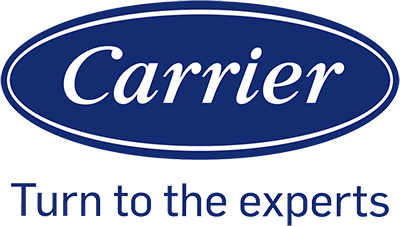Keeping an HVAC system running well for years takes more than changing filters or scheduling seasonal tune-ups. One of the most overlooked parts of the system is the ductwork, yet it plays a direct role in how long the equipment lasts. By keeping ducts clean, sealed, and well-maintained, we extend the lifespan of the entire HVAC system.

When ducts collect dust, leaks, or blockages, the system has to work harder to move air. That extra strain shortens its life and increases the chance of costly breakdowns. Regular duct maintenance reduces wear, improves airflow, and helps the system run at its best.
We will look at how duct care impacts system longevity, the practices that make the biggest difference, and the additional steps that support an HVAC system over time. By connecting duct maintenance with overall system care, we can protect our investment and avoid problems before they start.
The Impact of Duct Maintenance on HVAC System Lifespan

Clean and well-maintained ducts reduce strain on the HVAC system and help keep airflow steady. When ducts are neglected, the system works harder, energy use increases, and indoor air quality suffers.
How Duct Cleanliness Affects HVAC Performance
When dust and debris build up inside ducts, airflow becomes restricted. Restricted airflow forces the HVAC system to run longer to reach the set temperature. This extra run time increases wear on motors, fans, and other components.
Clean ducts support steady airflow, which helps the system maintain even heating and cooling. Consistent airflow also reduces the number of cycles the unit must run each day. Fewer cycles mean less stress on mechanical parts.
We also need to consider energy use. A clogged duct system can raise energy costs by making the system less efficient. Regular duct cleaning keeps efficiency closer to the original design level.
By keeping ducts clear, we reduce strain, extend system life, and maintain better indoor comfort.
Common Issues Caused by Neglected Ducts
When ducts are not maintained, dirt, dust, and even mold can collect inside. This buildup lowers indoor air quality and can trigger allergies or breathing issues. Poor air quality also makes the home feel less comfortable.
Leaks and gaps in ducts are another problem. Air leaks reduce system efficiency because heated or cooled air escapes before reaching the rooms. This makes the HVAC system run longer and harder.
Neglected ducts can also cause uneven temperatures in different rooms. Some areas may feel too hot or too cold because airflow is blocked or leaking.
If left unchecked, these issues shorten the lifespan of the HVAC system. Extra strain on the blower motor, compressor, and other parts often leads to more frequent repairs.
Signs Your Ducts Need Maintenance
We can usually spot duct problems by paying attention to certain signs. Weak airflow from vents often points to clogged or leaky ducts. Higher energy bills without extra use of the system can also signal duct issues.
Dust around vents and registers may show that ducts are dirty. Musty or stale odors when the system runs can mean mold or debris inside.
Uneven heating or cooling between rooms is another warning sign. If the HVAC system cycles more often than normal, restricted airflow may be the cause.
A simple checklist of signs to watch for:
- Weak airflow from vents
- Higher energy bills without more usage
- Dust buildup near vents
- Unusual odors when system runs
- Uneven room temperatures
Paying attention to these signs helps us schedule duct maintenance before problems grow worse.
Essential Duct Maintenance Practices for Longevity

We extend the life of our HVAC system by keeping ducts clean, sealed, and free from leaks. Regular attention to ductwork reduces strain on equipment, improves airflow, and helps maintain consistent temperatures throughout the home.
Routine Duct Inspections and Cleaning
We should schedule duct inspections at least once every two to three years. Dust, dirt, and pet dander often build up inside ducts, which can restrict airflow and force the system to work harder. A professional cleaning removes these contaminants and allows air to move more freely.
Air filters also play a key role. Dirty filters allow particles to circulate through the ductwork, leading to faster buildup. We should replace filters every 1-3 months depending on usage and household conditions.
During inspections, technicians check for mold, pests, or moisture inside ducts. These issues not only affect air quality but also shorten the system’s lifespan. By addressing them early, we prevent damage that could require costly repairs.
Proper Sealing and Insulation of Ductwork
Sealed and insulated ducts help keep conditioned air at the right temperature as it travels through the system. Without proper sealing, air escapes into attics, crawl spaces, or walls, which wastes energy and forces the HVAC unit to run longer.
We can use mastic sealant or metal tape to close gaps and joints. Standard duct tape does not hold up over time and should be avoided. Once sealed, adding insulation around ducts reduces heat loss in winter and heat gain in summer.
Good insulation also supports home insulation by keeping indoor spaces more stable. This lowers energy bills and reduces wear on the HVAC system since it does not need to cycle as often.
Addressing Leaks and Blockages
Leaks and blockages in ductwork are common problems that reduce system efficiency. Even a small leak can cause a noticeable drop in airflow, making some rooms harder to heat or cool. We can often spot leaks by checking for uneven temperatures or whistling sounds near ducts.
Blockages occur when debris, collapsed ducts, or disconnected sections restrict air movement. A technician can locate and clear these issues during hvac maintenance visits.
By repairing leaks and clearing blockages quickly, we keep airflow balanced and reduce unnecessary strain on the blower motor. This helps extend the overall life of the HVAC system while improving comfort in every room.
Supporting Factors That Maximize HVAC System Life
A well-maintained HVAC system depends on more than duct cleaning. Filter care, proper airflow, thermostat upgrades, and refrigerant checks all work together to reduce strain on equipment and extend its service life.
The Role of Air Filters and Regular Replacement
Air filters protect our HVAC system by trapping dust, pollen, and other particles. When filters clog, airflow drops and the system works harder to heat or cool our home. This extra strain can shorten the lifespan of air conditioners, furnaces, and heat pumps.
We should check filters every 30 days and replace them at least every 60-90 days. Homes with pets or high dust may need more frequent changes. Using the right filter size and type ensures a proper fit and effective filtration.
Key points to track:
- Check monthly for dirt buildup
- Replace on schedule (60-90 days, or sooner if dirty)
- Match filter type to system requirements
Regular filter replacement is one of the simplest and most affordable ways to reduce wear and keep energy costs steady.
Optimizing Ventilation and Airflow
Proper ventilation ensures air moves evenly through every room. Blocked or leaky ducts, closed vents, or poorly designed layouts force the system to run longer. This wastes energy and adds stress to motors and fans.
We should keep supply and return vents clear of furniture, rugs, or curtains. Sealing duct leaks with mastic or foil tape prevents air loss and improves efficiency. In some cases, adding duct insulation helps maintain consistent temperatures.
Steps that improve airflow:
- Keep vents open and unblocked
- Inspect and seal duct leaks
- Use duct insulation where needed
Balanced airflow allows furnaces, air conditioners, and heat pumps to operate at peak performance without unnecessary strain.
Upgrading to Programmable and Smart Thermostats
Programmable thermostats help us control heating and cooling schedules. By lowering temperatures when we sleep or adjusting cooling while we are away, the system cycles less often and lasts longer.
Smart thermostats go further by learning our habits and adjusting settings automatically. Many models connect to Wi-Fi, giving us remote control through a phone app. Features like energy reports and reminders for filter replacement also support system upkeep.
Benefits of thermostat upgrades:
- Reduced system run time
- More consistent comfort
- Lower energy bills
- Helpful maintenance alerts
When we pair efficient thermostat use with regular duct and filter care, we reduce wear on HVAC components and extend their service life.
Monitoring Refrigerant Levels and System Components
Refrigerant levels directly affect air conditioner and heat pump performance. Low refrigerant can cause the compressor to overheat or fail, leading to costly repairs. Too much refrigerant is also harmful and reduces efficiency.
We should schedule professional checks to measure refrigerant charge and ensure no leaks are present. During service visits, technicians also inspect coils, fans, and electrical parts. Catching small issues early prevents breakdowns and protects the system’s lifespan.
What to monitor:
- Refrigerant charge and leaks
- Condition of coils and fans
- Electrical connections and safety controls
By keeping refrigerant levels balanced and system components in working order, we help our HVAC equipment run reliably year after year.
Integrating Duct Maintenance with Overall HVAC Care
When we connect duct cleaning and inspections with routine HVAC system maintenance, we reduce strain on equipment and improve efficiency. This approach helps us keep air conditioners, furnaces, and heat pumps operating longer with fewer unexpected repairs.
Scheduling Professional HVAC Maintenance
We should schedule professional HVAC maintenance at least once a year, though twice a year is better for systems that handle both heating and cooling. A spring appointment prepares air conditioners for summer, while a fall visit ensures furnaces or heat pumps are ready for cold weather.
During these visits, technicians inspect ducts for leaks, blockages, or buildup. They also check refrigerant levels, clean coils, test airflow, and confirm that thermostats work correctly. Pairing duct inspections with these steps ensures the system runs without unnecessary stress.
A maintenance schedule also gives us a record of service history. This makes it easier to spot recurring issues and address them before they damage the HVAC system. Regular visits also keep warranties valid, which can save us money on parts or repairs.
Benefits of a Comprehensive Maintenance Plan
A comprehensive maintenance plan combines duct care with full HVAC system maintenance. This type of plan usually includes:
- Duct inspections and cleaning
- Filter replacement
- Coil and blower cleaning
- Refrigerant checks
- Thermostat calibration
By covering both ducts and equipment, we reduce the chance of uneven airflow, hot and cold spots, or wasted energy. Clean ducts allow conditioned air to move freely, while serviced components prevent strain on motors and fans.
These plans also spread costs over time. Instead of paying for emergency repairs, we invest in routine service that prevents breakdowns. This approach helps us keep monthly energy bills stable and avoids sudden, expensive fixes.
Extending the Lifespan of Air Conditioners, Furnaces, and Heat Pumps
Air conditioners, furnaces, and heat pumps last longer when ducts are clean and sealed. Dirty or leaking ducts force equipment to run longer cycles, which wears out compressors, burners, and fans faster than normal.
When we maintain ducts, the system delivers air efficiently, reducing operating time. This lowers stress on moving parts and helps avoid overheating or freezing issues. For example, clean ducts keep air conditioners from overworking during hot days and help furnaces distribute heat evenly in winter.
Routine duct care also supports heat pumps, which handle both heating and cooling. Because they operate year-round, they benefit the most from reduced strain. By combining duct maintenance with equipment service, we add years to the lifespan of every major HVAC component.




